Your Cart is Empty
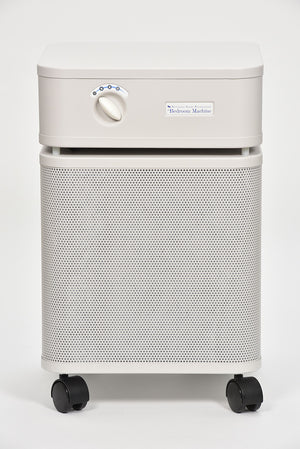
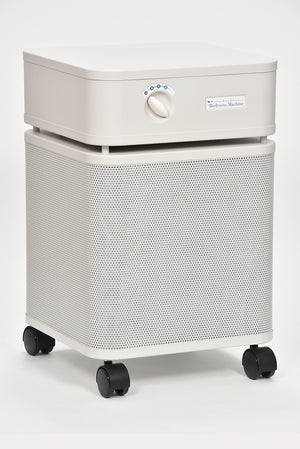
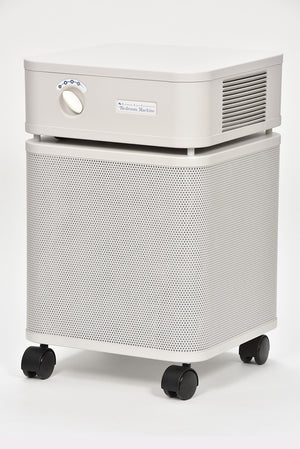
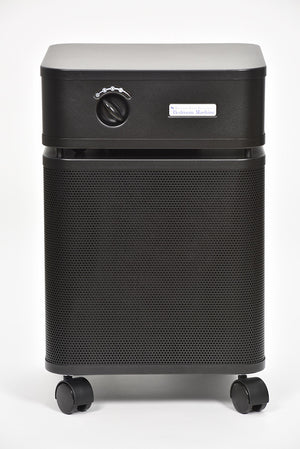
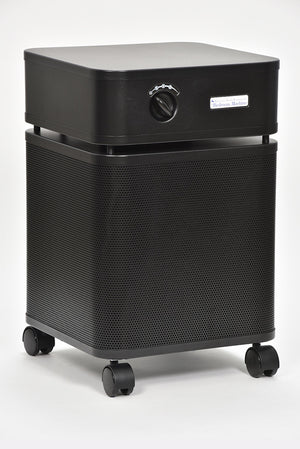
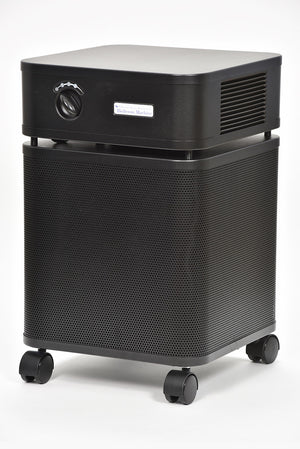
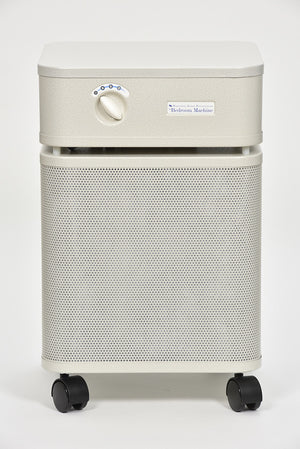
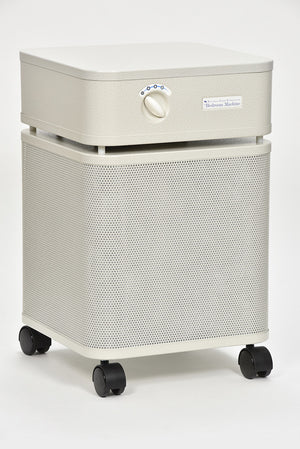
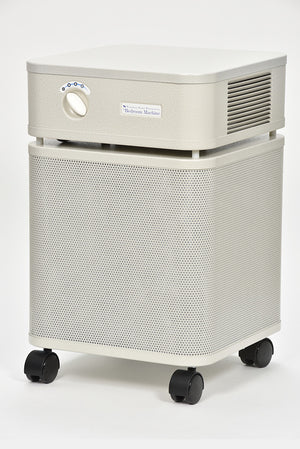
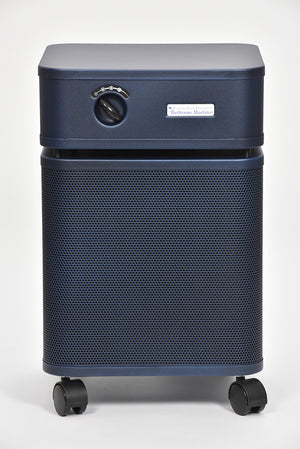
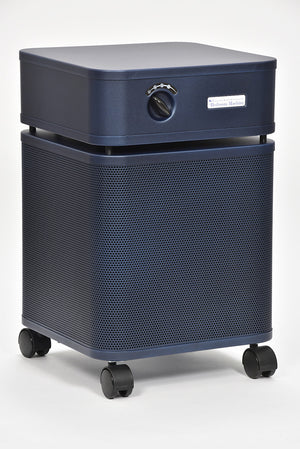
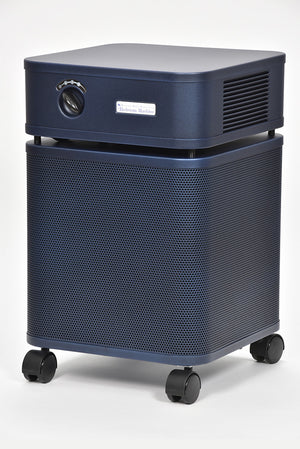
Bedroom Machine Austin Air Purifier - HM402
$1,450.00
The Bedroom Machine (HM402) is Austin’s most advanced air purifier, incorporating all the benefits of the HM400 and HM450, plus Austin’s unique HEGA (highly effective gas adsorption) filtration material.
Five progressive stages of filtration, including ultra-fine particulate filtration and enhanced gas adsorption, for extreme chemical sensitivities.
Cleans up to 1500 square feet (in area with 8ft ceilings).
This premium, low maintenance air cleaner is for people with extreme chemical sensitivities (MCS) requiring the finest filtration of odours, gases, chemicals and particulate, including bacteria and viruses.
Robust construction includes steel housing and toxin-free components, thoroughly sealed to prevent leaking of uncleaned air. Requires no new parts or filter replacements for 5 years (with normal residential use. See details.)
Warranty Five-year mechanical warranty for the machine and five-year pro-rated filter warranty.
Austin machines provide the best long term value, performance and build quality in the air purification industry.
-
How It Works
This machine has 3 fan speed settings which draw in air from all four sides totaling over 5 square feet of intake area for exceptional air gathering capacity. On the highest setting up to 250 cubic feet of air is cleaned every minute by passing through a multi stage process including approximately 15 pounds of Activated Carbon/Zeolite blend, 60 square feet of True Medical Grade HEPA, plus HEGA Carbon Cloth for superior gas filtration. Cleaned air exits through a louvered upper outlet on one side of the housing.
About the Bedroom Machine Filter - HM402
The Bedroom Machine Filter consists of 5 stages of air filtration and purification material down to nano-sized filtration, guaranteed for five years of exceptional performance.
-
Permafilt Pre-filter
Removes visible particles such as hair, pet dander and dust, pollen, allergens and mold. This prefilter is positioned just inside the circumference of the perforated housing. For best service life, it should be vacuumed from outside of the unit at least once a month.
-
Pre-filter Enclosing Filter Drum
Removes relatively smaller particles such as mold spores and pollen. It wraps around the outside of the filter drum, protecting the service life of the filtration materials inside the drum.
-
15 lbs (6.8 kg) of Activated Carbon (impregnated with potassium iodide for enhanced filtration of toxic gases), and zeolite.
Removes odours, toxic chemicals, gases.
-
60 sq ft (5.6 sq metres) of True Medical Grade HEPA
Removes 99.97% of all airborne particles larger than 0.3 microns. Effectiveness is 95% for particles at 0.1 microns, including bacteria, viruses and harmful airborne micro-organisms.
-
HEGA Military-Grade Carbon Cloth
High Efficiency Gas Arresting capability.
Austin Air machines are warranted to be free from material and mechanical defects for a period of 5-years from the date of purchase, provided that the machine was operated under normal residential use, and that the Warranty Activation was completed.
5-Year Pro-Rated Filter Warranty
Austin Air offers an amazing 5-year pro-rated filter warranty, calculated form date of purchase, provided that the Austin machine was operated under normal residential conditions and the Warranty Activation was completed. Vacuuming the outside of the machine at least once per month helps to ensure a 5-year service life for the PermaFilt prefilter. Otherwise, the PermaFilt prefilter should be replaced annually at a nominal cost.
30-Day Money Back Guarantee
Customers can return their Austin Air product within 30 days from the date they purchase it from watermatters™. See shipping/returns tab on this product page for details.
Construction Quality & Mobility
Dedicated to providing real health benefits, Austin Air machines contain NO off-gassing plastics. Austin Air housings are solidly built from perforated 23-gauge steel with a baked-on powder-coat finish. Properly sealed to prevent dirty air bypass. Four easy roll castors for simple maneuvering.
Made in USA
Austin Air is a family owned business founded in Ontario in 1990. Today Austin Air is based in Buffalo, NY where it maintains the largest manufacturing plant of its kind in the world.
-
Permafilt Pre-filter
-
Dimensions
23” (58.4 cm) high x 14.5” (36.8 cm) wide x 14.5” (36.8 cm) deep
Room Coverage*
Up to 1500 sq ft (139 sq metres). The smaller the area, the more effective the filtration.
For effective general air cleaning this machine performs best in spaces up to 470 sq ft (44 sq metres).
For chemically sensitive individuals this machine performs best in rooms up to 235 sq ft (22 sq metres).
Air Flow and Air Exchanges*
This machine can process 250 cubic ft (11.3 cubic metres) of air per minute which is equivalent to:
8 air exchanges per hour in a 235 sq ft space (22 sq metres).
6 air exchanges per hour in a 315 sq ft space (29 sq metres).
4 air exchanges per hour in a 470 sq ft space (44 sq metres).
2 air exchanges per hour in a 940 sq ft space (87 sq metres).
*based on high speed setting and 8 ft ceilings (2.44 metres)
Air Intake/Outflow
360°air intake. Purified air exits through louvered vent on one side of upper deck.
Fan
Plastic centrifugal fan.
Three speeds:
400 cubic feet per minute on high speed
200 cubic feet per minute on medium speed
75 cubic feet per minute on low speed
Sound Levels
50 dB (low) to 66 dB (high)
Housing Construction
Perforated 23-gauge steel housing. Baked-on powder-coat finish does not off-gas. Properly sealed to prevent dirty air bypass.
Wheels
4 easy-roll castors
Weight
45 pounds (20.4 kg)
Motor
Permanent split capacitor mounted on shock absorbers. Rated for continuous high RPM and long life duty.
Power
56 watts – 135 watts
0.51 amps – 1.3 amps
120V
Safety
CSA and UL approved
Internal Filter Dimensions
13.5” diameter x 14.5” high
Internal Filter Composition
15 lbs activated carbon (impregnated with potassium iodide) and zeolite
60 sq ft of true medical-grade HEPA material
HEGA military-grade gas adsorbing cloth
Metal end caps with foam sealing gaskets
PermaFilt prefilter – cotton/polyester
Internal Filter Weight
21 lbs
* All product specifications are subject to change without prior notice from the manufacturer.
- Austin Air Selection Guide
-
What is the difference between the Healthmate™ and the HealthMate PLUS™?
Both machines have a true medical grade HEPA filter plus granular activated carbon and zeolite. The carbon in the PLUS model is impregnated with potassium iodide to make the HealthMate Plus™ more effective at removing formaldehyde and ammonia. The HealthMate PLUS™ is especially recommended for new homes, laboratories, beauty salons, funeral homes. Sources of formaldehyde in homes can be carpeting, wood paneling, construction materials, upholstery and drapery.
Where should I position my Austin Air filter?
Position your Austin Air filter at least 4” form walls. For maximum benefit use the air cleaner in your bedroom with the door closed. Standard Austin machines will clean the air in an average bedroom in about 15 minutes with the door closed.
What does HEPA mean?
HEPA stands for ‘High Efficiency Particulate Arresting’. The original HEPA filter was developed by the Atomic Energy Commission during WWII to prevent the spread of airborne radioactive contaminants. Today, true HEPA filters continue to be the most efficient type of air filter. They must meet or exceed the True HEPA standard of trapping 99.97% particles 0.3 microns or larger. A human hair is about 300 times too large to penetrate a HEPA filter. This standard is set by the US Department of Energy.
What does HEGA mean?
HEGA stands for ‘High Efficiency Gas Adsorption’. It is a military grade carbon cloth filter originally developed in Britain as a defense against chemical warfare. HEGA cloth is light weight and extremely efficient at adsorbing gaseous pollutants in conditions unsuitable for granular activated carbon.
What is activated carbon?
Activated carbon is carbon derived from coconut shells treated with a steam process. Activated carbon has enormous surface area available for adsorbing gases and odours due to its micro-porosity. It is the most sought after material for cleaning contaminants from air and water. For instance, it is used in military gas masks.
What is Zeolite?
Zeolites are a special class of micro-porous minerals known as “molecular sieves.” Zeolites can selectively sort particulate based on a size exclusion process. Zeolites also have exceptional properties for adsorbing gases like formaldehyde, ammonia and carbon monoxide.
What are Volatile Organic Compounds (VOCs)?
VOCs are organic chemicals that vaporize easily at room temperature into the surrounding air. VOCs are everywhere, man-made and naturally occurring. Most odours are VOCs. Some VOCs, such as from paint, formaldehyde, artificial fragrances, building materials floor coverings, draperies and plastics are dangerous to our health. Concentrations are highest indoors. Negative health effects develop from long term exposure making symptoms more difficult to link to the cause.
What is Multiple Chemical Sensitivity (MCS)?
Multiple chemical sensitivity (MCS) is a chronic disabling condition attributed to low-level chemical exposure. MCS is not recognized by established health associations. Symptoms can be vague and hard to pinpoint. Some characteristic symptoms are headaches, nausea, dizziness, fatigue, inflammation of the skin, joints, gastrointestinaltract and respiratory system.
What is the CFM rate?
The CFM (cubic feet per minute) is the measurement of how much air passes through the unit. The CFM for Austin standard machines is 250 cfm on high speed and 75 cfm on low speed. The CFM for Austin Junior machines is 125 cfm on high speed and 50 cfm on low speed.
Is there a difference between quoted fan rates and the actual cleaned air coming out of an air filter?
Maximum room coverage figures are often exaggerated in the air purification industry by measuring air flow rates without filters installed. Good air purifiers, using true HEPA filters and large amounts of carbon, significantly reduce air flow rate because they provide effective contact time with the filtration media to thoroughly clean contaminated air. Additionally, Austin machines are thoroughly constructed with proper seals to prevent uncleaned air leaking from the machine. Poor quality air filters may leak dirty air which will increase ‘air flow’ but will not improve air quality. Austin Air is fastidious about quality construction and filtration materials for delivering first class, long lasting air purification results.
How many Air Changes per Hour (ACH) do I need my air filter to perform?
‘Air Exchanges per Hour’ (ACH) is a formula used to calculate the how often an air purifier cleans all the air in a room within one hour. People who suffer from allergies, asthma or chemical sensitivities will want at least 4 air exchanges per hour. Six or eight ACH are preferred. At 6 ACH an air purifier set on its highest speed will take 10 minutes to clean the air if no new pollutants are introduced.
What is ‘Clean Air Delivery Rate’ (CADR)?
‘Clean Air Delivery Rate’ (CADR) is a measurement developed by The Association of Home Appliance Manufacturers. Air filter brands can pay to have their machines rated according to this measurement.
CADR does not measure an air purifier’s ability to filter chemical contaminants, Volatile Organic Compounds (VOCs), toxic gases and odours.
Several leading air filter brands, including Austin Air, do not subscribe to CADR because a CADR measurement determines the volume of air ‘purified’ by the machine but does not include an assessment of the machine’s thoroughness at retaining the sub-micron particles it processes. Improperly sealed air filters can allow significant quantities of contaminated air to escape with outflowing ‘purified’ air. Poorly designed air filters may suck cleaned air right back into the machine rather than sending it out into the room in exchange for air that needs to be cleaned.
Properly sealed air cleaning machines with substantial filtration media will cause air resistance, creating more contact time with the filtration media for more efficient filtration and consequently slowing the Clean Air Delivery Rate.
Another brand of air purifier claims removal of airborne particulate as small as 0.003 micron. Why doesn’t Austin Air claim an equally small micron rating?
Airborne particulate reduction ratings are measured with an air testing gun which is held to the air exiting the machine being tested. The inner components of some air purifiers (not Austin Air machines) contain Styrofoam which has electrostatic properties that skew the readings captured by an air testing gun. This malfunction results in near perfect readings that do not accurately reflect the true capabilities/limitations of the machine being tested.
Why are the type of construction materials used for air purifiers so important for chemically sensitive individuals?
Most air purifiers are made of injection molded plastics which off-gas toxic fumes. Chemically sensitive individuals may have no tolerance for any off-gassing. Austin Air makes every attempt to avoid the use of off-gassing materials in the construction and packaging of their machines. The structure of Austin Air purifiers consists of 23 gauge North-America sourced steel with water-based baked-on paint finish.
About Ozone and Air Filters
Ozone (O3) is a powerful oxidant that is very effective at killing micro-organisms. It is so caustic that it can also damage mucus membranes, lungs and living tissues. Unlike the beneficial ‘ozone layer’ that prevents damaging solar rays from reaching the Earth’s surface, man-made ozone is a potent respiratory hazard. Ozone is produced as a by-product from the action of ultraviolet light, ionizing and electrostatic processes used by some air filter manufacturers. Incomplete oxidation of chemical compounds with ozone may result in the formation of dangerous toxins. For these reasons Austin Air purifiers do not produce or utilize ozone, ionization, electro-static precipitation or ultraviolet light.
Why don’t Austin Air Machines have Remote Sensors and Filter Change-out Alarms?
Typically these added air filter features do not have the ability to measure the quality of the air that has passed through the machine or the present condition of the air filter. They are based on time and may encourage premature filter replacement.
Sensors that can measure the existing condition of the air filter are significantly more sophisticated and adding considerable expense to the cost of an air filter, an expense that is passed on to the consumer.
Most sensors come with indicator lights. The most efficient place to position an air filter is in the bedroom. Sensor lights are often unwelcome in a bedroom at night.
For these reasons, Austin Air does not include lights, sensors, timers, alarms or remotes with Austin machines.
How do I know when to replace my Austin Air filter?
Austin Air filters should be changed every 5 years or sooner if used in challenging circumstances.
Replace your Austin Air filter whenever the first of these conditions occurs:- after five years of use
- air flow becomes restricted
- outflowing air has bad odour
What causes shortened filter life?
Some possible causes are new carpeting, new construction, paint fumes, heavy smoking, urban pollution, chemical-producing activities and lots of pets.
Can Austin Air Filters clean up advanced mold and mildew?
No air filter, whether it be Austin or some other brand, can get rid of advanced mold and mildew conditions. Remediation at the source of the problem is needed before installing an air filter.
-
Shipping
Free shipping applies to most parts of Canada and USA (exceptions apply to some remote locations) for the initial purchase of an Austin Air Purifier or Austin Air replacement filter.
Time Until Delivery(for shipped orders)
Please allow 5-10 days for delivery.
Alternative Delivery Arrangements (for residents of Metro Vancouver only)
If you don’t think you will be home to receive your delivery, you can have it shipped to watermatters™ store and we will receive it for you. You can then pick up your Austin Air product from our store at your convenience.
watermatters™
2539 Laurel St.
Vancouver BC
V5Z 4P8
604-733-7888
Austin Air Product Returns
From date of purchase (from watermatters™) the customer has 30 days to contact watermatters™ to arrange for the return of their Austin Air product.
Return shipping will be to Ontario (address will be provided), and will be at the customer’s expense.
The original cost of shipping the unit to the customer will be deducted from the refund which will be issued by watermatters™ to the customer upon return of the goods to the specified address in Ontario.














